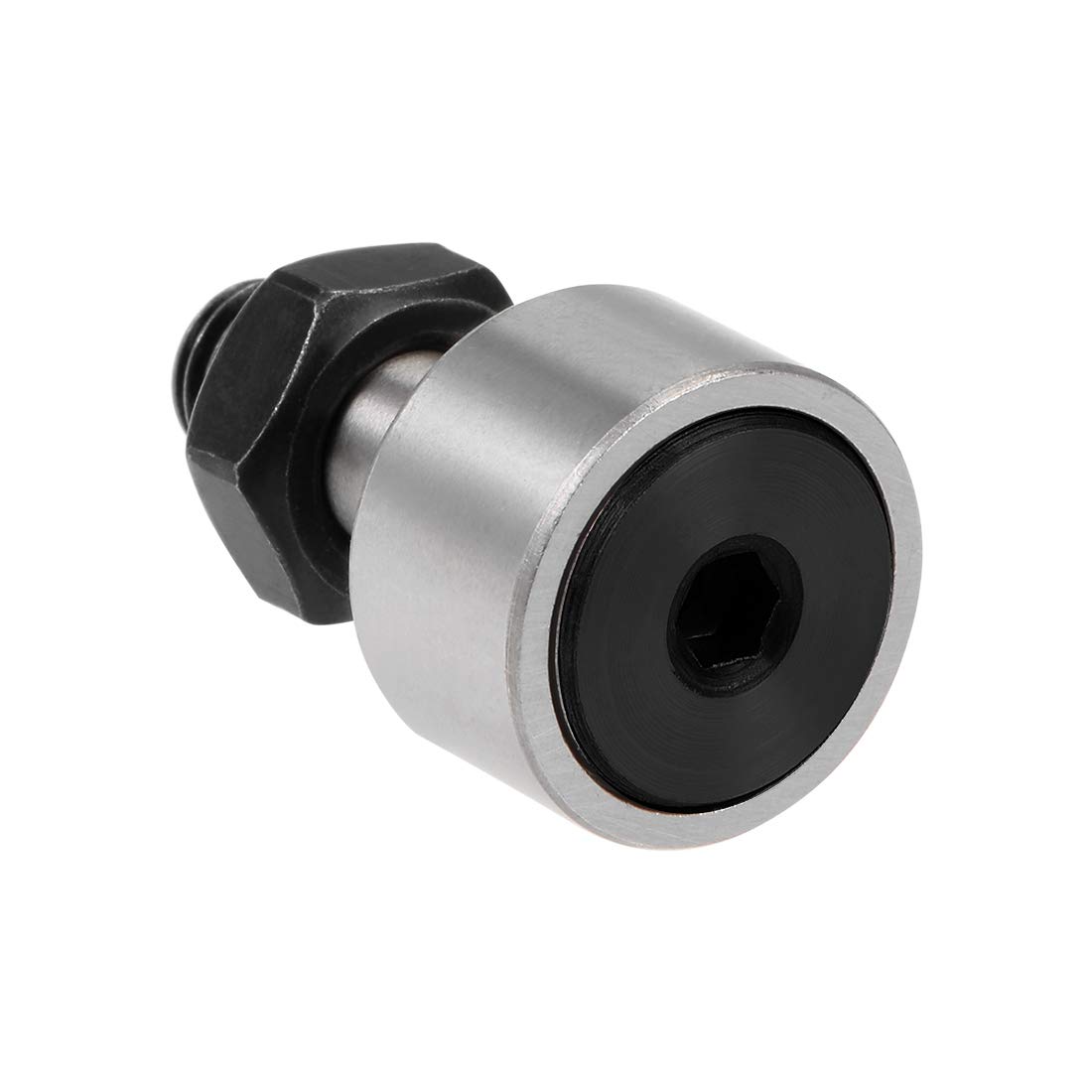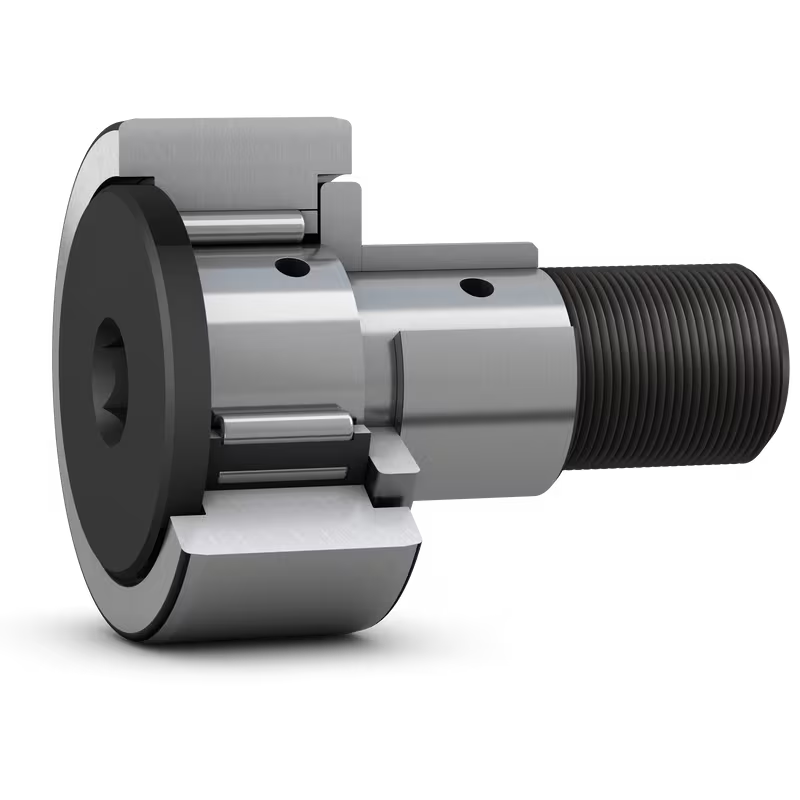Product Description
Product Description
A needle roller bearing is a special type of roller bearing which uses long, thin cylindrical rollers resembling needles. Ordinary roller bearings’ rollers are only slightly longer than their diameter, but needle bearings typically have rollers that are at least 4 times longer than their diameter.
|
Product name |
neddle bearing |
|
Condition |
New |
|
Warranty |
1 year |
|
Applicable Industries |
Building industry machinery |
|
Video outgoing-inspection |
Available |
|
Machinery Test Report |
Available |
|
Marketing Type |
New Product 2571 |
|
Warranty of core components |
1 year |
|
Core Components |
Bearing |
|
Place of Origin |
China,ZHangZhoug |
|
Quality |
Large bearing capacity,high speed,low noise. |
|
Brand Name |
CHINAMFG |
|
Material |
Steel |
|
service |
ODM/OEM |
Product Parameters
Detailed Photos
Company Profile
Certifications
Our Advantages
FAQ
Q1: Do you have a catalogue? Can you send me the catalogue to have a check of all your products?
A: Yes , We have product catalogue.Please contact us on line or send an Email to sending the catalogue.
Q2: I can’t find the product on your catalogue, can you make this product for me?
A: Our catalogue shows most of our products,but not all.So just let us know what product do you need.
Q3 : Can you make customized products and customized packing?
A: Yes.We made a lot of customized products for our customer before.And we have many moulds for our customers already.About customized packing,we can put your Logo or other info on the packing.There is no problem.Just have to point out that ,it will cause some additional cost.
Q4: Can you provide samples ? Are the samples free ?
A: Yes,we can provide samples.Normally,we provide 1-2pcs free samples for test or quality checking.you have to pay for the shipping cost.If you need many items, or need more qty for each item,we will charge for the samples.
To get price list of linear gudies, please contact us.
/* January 22, 2571 19:08:37 */!function(){function s(e,r){var a,o={};try{e&&e.split(“,”).forEach(function(e,t){e&&(a=e.match(/(.*?):(.*)$/))&&1
| Cage: | With Cage |
|---|---|
| Rows Number: | Single |
| Load Direction: | Radial Bearing |
| Style: | With Outer Ring |
| Material: | Bearing Steel |
| Type: | Closed |
| Samples: |
US$ 3/Piece
1 Piece(Min.Order) | |
|---|
| Customization: |
Available
|
|
|---|

Can you provide insights into the importance of proper installation and alignment of cam rollers?
Proper installation and alignment of cam rollers are crucial for achieving optimal performance, longevity, and reliability of the tracking system. The installation and alignment process directly impacts the functionality, efficiency, and lifespan of the cam rollers. Here are some key insights into the importance of proper installation and alignment:
- Accurate Tracking: Proper installation ensures that the cam rollers are positioned correctly and aligned with the cam profile or track. Accurate alignment is essential for achieving precise and consistent tracking of objects or components. Even a slight misalignment can result in deviations from the desired path, causing positioning errors, reduced accuracy, and compromised system performance.
- Smooth Motion: Correct installation and alignment play a significant role in enabling smooth and uninterrupted rolling motion of the cam rollers. Misalignment or improper installation can introduce friction, uneven loading, or binding, which can lead to jerky or erratic motion. On the other hand, proper alignment facilitates smooth and efficient rolling, minimizing energy losses, reducing wear, and ensuring seamless operation.
- Load Distribution: Proper alignment helps distribute the load evenly among the cam rollers and the associated components. Uniform load distribution prevents excessive stress on individual rollers, bearings, or tracks, reducing the risk of premature wear, fatigue, or failure. By ensuring proper load distribution, proper installation and alignment contribute to the longevity and reliability of the cam roller system.
- Reduced Wear and Damage: Correct installation and alignment minimize friction and wear between the cam rollers and the track. Improper alignment can cause rubbing, scraping, or uneven contact, leading to accelerated wear, surface damage, or deformation of the rollers or track. Proper alignment reduces these issues, extending the lifespan of the cam rollers and reducing the frequency of maintenance or replacements.
- Optimized Performance: Properly installed and aligned cam rollers maximize the performance of the tracking system. When the cam rollers are aligned correctly, they can operate at their intended design parameters, ensuring efficient power transmission, accurate tracking, and smooth motion. This optimization leads to improved productivity, reduced downtime, and enhanced overall system performance.
- Alignment Sensitivity: Cam roller systems are often sensitive to misalignment due to their precise nature. Small deviations in alignment can have a significant impact on the performance and functionality of the system. Therefore, it is crucial to follow manufacturer guidelines and recommended alignment procedures during installation to ensure proper alignment and avoid potential issues.
- Ease of Maintenance: Proper installation and alignment facilitate easier maintenance and servicing of the cam rollers. When the cam rollers are correctly aligned, it becomes simpler to access and replace individual components, such as bearings or rollers, during routine maintenance or repairs. This reduces downtime, simplifies maintenance procedures, and ensures efficient upkeep of the tracking system.
In summary, proper installation and alignment of cam rollers are essential for achieving accurate tracking, smooth motion, load distribution, reduced wear, optimized performance, and ease of maintenance. By following proper installation procedures and ensuring precise alignment, the longevity, efficiency, and reliability of the cam roller system can be maximized, leading to improved overall system performance and longevity.

What maintenance practices are recommended for cam rollers to ensure optimal functionality?
Proper maintenance is essential for ensuring the optimal functionality and longevity of cam rollers. Regular maintenance practices help prevent premature wear, minimize downtime, and maintain the performance of cam rollers in various applications. Here are some recommended maintenance practices for cam rollers:
- Cleaning: Regularly clean the cam rollers to remove dust, dirt, and debris that can accumulate on the rolling surfaces. Use a soft brush or compressed air to clean the cam rollers, ensuring that no contaminants hinder their smooth operation.
- Lubrication: Apply appropriate lubrication to the cam rollers to reduce friction and wear. Use lubricants recommended by the manufacturer, ensuring they are compatible with the materials and operating conditions of the cam rollers. Regularly check the lubrication levels and replenish as needed.
- Inspection: Perform routine visual inspections of the cam rollers to check for any signs of wear, damage, or misalignment. Look for excessive play, deformation, or any irregularities that may affect their performance. If any issues are identified, take appropriate measures such as adjustments, repairs, or replacements.
- Tightening: Check the fasteners, such as bolts or screws, that secure the cam rollers to the equipment or mounting surfaces. Ensure that they are properly tightened to prevent loosening during operation, which could lead to misalignment or reduced performance.
- Alignment: Check the alignment of the cam rollers periodically to ensure they are properly aligned with the cam or track they are following. Misalignment can lead to increased wear, reduced accuracy, and decreased lifespan of the cam rollers. Adjust the alignment as necessary to maintain optimal functionality.
- Load Distribution: Monitor the load distribution among the rolling elements of the cam rollers. Ensure that the load is evenly distributed to prevent overloading or excessive stress on individual rolling elements. Uneven load distribution can lead to premature wear or failure of the cam rollers.
- Environmental Considerations: Consider the specific environmental conditions in which the cam rollers operate. Take appropriate measures to protect the cam rollers from corrosive substances, extreme temperatures, excessive moisture, or other environmental factors that may affect their performance. Use protective coatings, seals, or covers as needed.
- Replacement: Cam rollers have a finite lifespan, and eventually, they will need to be replaced. Monitor the wear and performance of the cam rollers over time. When signs of significant wear, damage, or reduced functionality are observed, plan for timely replacement to avoid unexpected failures or disruptions in the operation.
It is important to note that maintenance practices may vary depending on the specific design, materials, and operating conditions of the cam rollers. Therefore, it is recommended to refer to the manufacturer’s guidelines and recommendations for maintenance specific to the cam rollers being used.
By following these maintenance practices and adopting a preventive maintenance approach, operators can ensure the optimal functionality, reliability, and longevity of cam rollers in various applications.

What is a cam roller, and how is it utilized in mechanical systems?
A cam roller, also known as a cam follower or track roller, is a specialized type of roller bearing used in mechanical systems. It is designed to follow the surface profile of a cam or track and transmit motion or force between the cam and a moving component. Here’s a detailed explanation of what a cam roller is and how it is utilized in mechanical systems:
A cam roller consists of a cylindrical roller, needle roller, or ball bearing that is mounted in a stud or yoke. The stud or yoke provides a means of attachment to the moving component of the mechanical system. The roller or bearing element is housed within a thick-walled outer ring, which serves as a guide and support for the roller. The outer ring has a profile that matches the shape of the cam or track over which the cam roller operates.
The primary function of a cam roller is to convert rotary motion into linear motion or vice versa. As the cam or track rotates, the cam roller follows the profile, causing the roller to move along the track. This motion can be utilized in various ways depending on the specific application. Here are some common uses of cam rollers in mechanical systems:
- Motion Transmission: Cam rollers are often used to transmit motion from a rotating cam to a reciprocating or oscillating component. For example, in engines, cam followers are used to transfer the motion of the camshaft to the valves, opening and closing them at the appropriate timing.
- Guiding and Support: Cam rollers can also provide guidance and support to moving components in a mechanical system. They help maintain proper alignment and prevent lateral movement or deflection. This is particularly useful in applications such as conveyor systems, where cam rollers guide the movement of belts or chains.
- Load Bearing: Cam rollers are designed to withstand high loads and provide support to heavy-duty applications. They are often used in machinery and equipment where there is a need for reliable load-bearing capabilities. Examples include construction machinery, material handling equipment, and industrial automation systems.
- Compensating for Misalignment: In some applications, cam rollers are utilized to compensate for misalignment between components. The rolling motion of the cam follower allows it to adjust and accommodate slight deviations in the cam or track profile, ensuring smooth operation even in imperfect conditions.
The choice of cam roller design, size, and material depends on the specific requirements of the application. Factors such as load capacity, speed, operating conditions, and precision requirements are taken into consideration when selecting the appropriate cam roller. Regular maintenance, including lubrication and inspection of the cam roller, is important to ensure its proper functioning and longevity in the mechanical system.
In summary, a cam roller is a specialized type of roller bearing used in mechanical systems to transmit motion, provide guidance and support, bear loads, and compensate for misalignment. Its ability to follow the profile of a cam or track allows for efficient conversion of rotary motion to linear motion or vice versa. Cam rollers find application in a wide range of industries and play a crucial role in ensuring the smooth and reliable operation of mechanical systems.


editor by Dream 2024-05-16